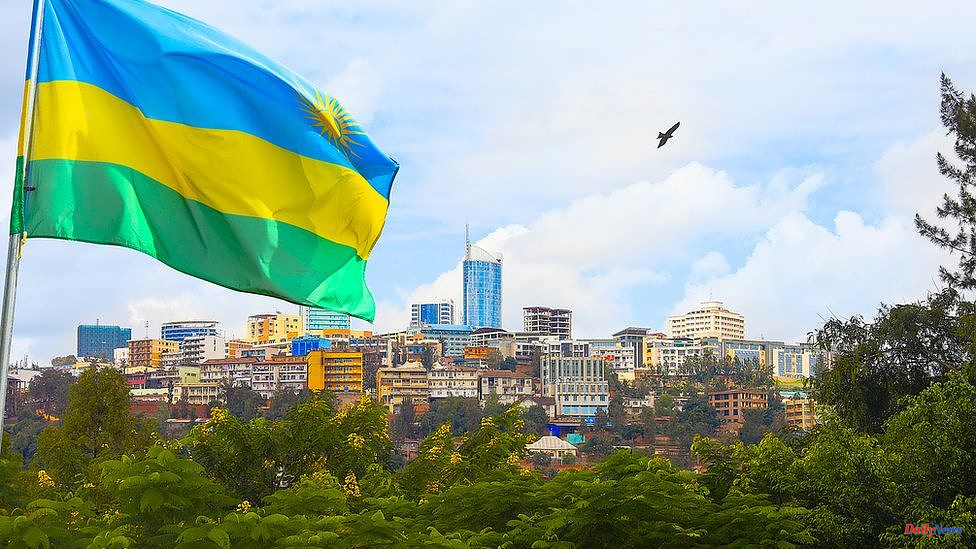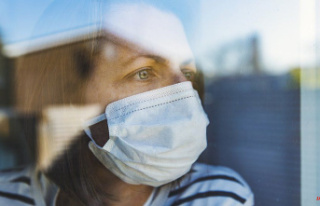After a late legal challenge, a flight meant to carry asylum seekers from the UK to Rwanda had to be cancelled minutes before takeoff.
The UK government has confirmed that it will organize another flight to Africa and claims the scheme will discourage people crossing the English Channel.
Some refugees will be sent to Rwanda to seek asylum after the five-year trial.
They might be granted permanent refugee status, which allows them to remain in Rwanda. They can either apply for permanent refugee status to stay in Rwanda or seek asylum in "safe third countries".
This policy targets people who enter the UK by illegal, dangerous, or unneeded methods.
Boris Johnson, UK prime minister, stated that anyone entering the UK illegally after January 1st could be sent without any limit.
Originally, 37 people were scheduled to board the Tuesday flight. However, legal challenges reduced that number to seven before it was cancelled.
The deal allows Rwanda to ask the UK for asylum for some of its most vulnerable refugee families. Rwanda claims that this will be limited to "outlier" cases.
Lawyers representing asylum seekers and charities had filed a number of legal challenges to the policy.
Critics question Rwanda's safety and claim that the scheme violates the European Convention on Human Rights.
Some people had been removed from the flight as a result. The Court of Appeal rejected a final attempt at blocking it on Monday, and the Supreme Court upheld it on Tuesday.
The European Court of Human Rights intervened late to stop the flight. Although this isn't an EU institution, it is part of the Council of Europe and still includes the UK as a member.
It ruled that KN, an Iraqi national, was at "real risk of irreversible injury" if he was sent by Rwanda to Iraq.
Further legal challenges were triggered by the judgment, and all passengers were ultimately removed.
Priti Patel, Home Secretary, said that she was disappointed but stated that "preparation is underway for the next flight".
In July, the Supreme Court will hold a judicial examination of the policy. Any syle seekers who were sent to Rwanda by the Supreme Court could be returned if it declares it illegal.
A Monday opinion poll suggests that the scheme is divisive.
Out of 2,463 respondents, 44% supported the policy. This includes 27% who strongly supported it. However, 44% were opposed to it, with 28% being "strongly" opposed.
According to the government, the asylum system costs PS1.5bn per year. More than PS4.7m per day is spent on hotels for homeless migrants. Critics claim that the daily cost of asylum is too high due to the Home Office backlogs at a 10-year peak - it takes too long to decide on applicants - and asylum seekers are prohibited from working until they are granted the green light.
This huge daily hotel bill covers thousands of Afghans that the UK saved last year from the advance of the Taliban.
Tom Pursglove, Minister of the Home Office, stated that a PS120m payment would be made to Rwanda as an upfront payment. Additional payments would follow as Rwanda handles more cases.
He stated that the cost of the project would be similar to what we currently spend on it, and that long-term, if we can control the situation, it will help us save money.
Officials at the Home Office are however skeptical. In a formal letter, the top civil servant informed the Home Secretary that there wasn't enough evidence to show that the policy had sufficient deterrent effects to be worth the money.
Comparatives were made to Australia's offshore process system. It was estimated that it would cost $957m (PS546m), in 2021-22.
Liz Truss declined confirmation of the cost of the Tuesday flight. In 2020, however, it was more expensive to fly people out of the UK via charter flight than PS13,000 per head.
According to reports, Rwanda has built basic hostels in the capital Kigali for migrants from the UK.
Rwanda's government claims it can handle 1,000 UK asylum seekers during the trial but has the capacity to take on many more. The UN refugee agency is skeptical, saying it is concerned that Rwanda can't handle arrivals from the UK due to a lack of lawyers, case workers, and interpreters.
Yolande Makolo, spokesperson for the government said that Rwanda is a place that welcomes migrants and will do everything possible to ensure that they are well taken care of and are able to build a life here.
Around 150,000 refugees are already residing in Rwanda from other African countries like Burundi and DR Congo. It is also home to migrants who crossed the Mediterranean to Europe via Libya.
Some refugees work as domestic and farm laborers. Many are unemployed and rely on state benefits, which average PS35 per month.
Rwanda's government claims that the country has experienced a "miracle" of development since 1994 when 800,000. people were killed in a genocidal conflict.
Subsistence farmers make up about 70% of the nation's 13,000,000 inhabitants. They grow what they eat and sell it to others.
On 14 April, the UK government announced the Rwanda policy for the first time.
Between 18 April to 5 June, 3,599 asylum seekers were reported to have arrived by small boats.
This is still less than the 4,554 people who arrived between April 2021 and June 2021. However, it is expected to rise when the figures for the entire April-June period are available.
28 526 people have been known to have crossed the border in small boats in 2021. This is an increase from 8,404 in 2020. According to Border Force union officials, this year's total is expected to be significantly higher than in 2020. They will likely be lower than those recorded during Tony Blair's tenure as prime minister, and still lower than those seeking asylum in France or Germany.
In 2021, 75% were men between 18 and 39 years old. Around 5% of arrivals were men over 40 years old, 7% were women aged 18-39, and 12% were children younger than 18 (three quarters of whom were male).
The majority of immigrants to Iran were previously Iranians, 80% in 2018 and 66% in 2019.
There has been an increase in the number of people crossing from different countries. According to the Home Office, 30% of small boat arrivals in Iran were Iranians. 11% Eritreans, 9% Syrians and 21% Iraqis made up the remaining 21%.












